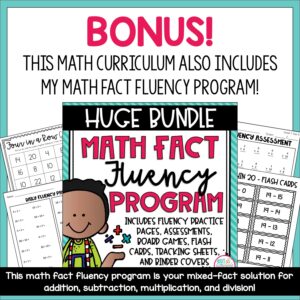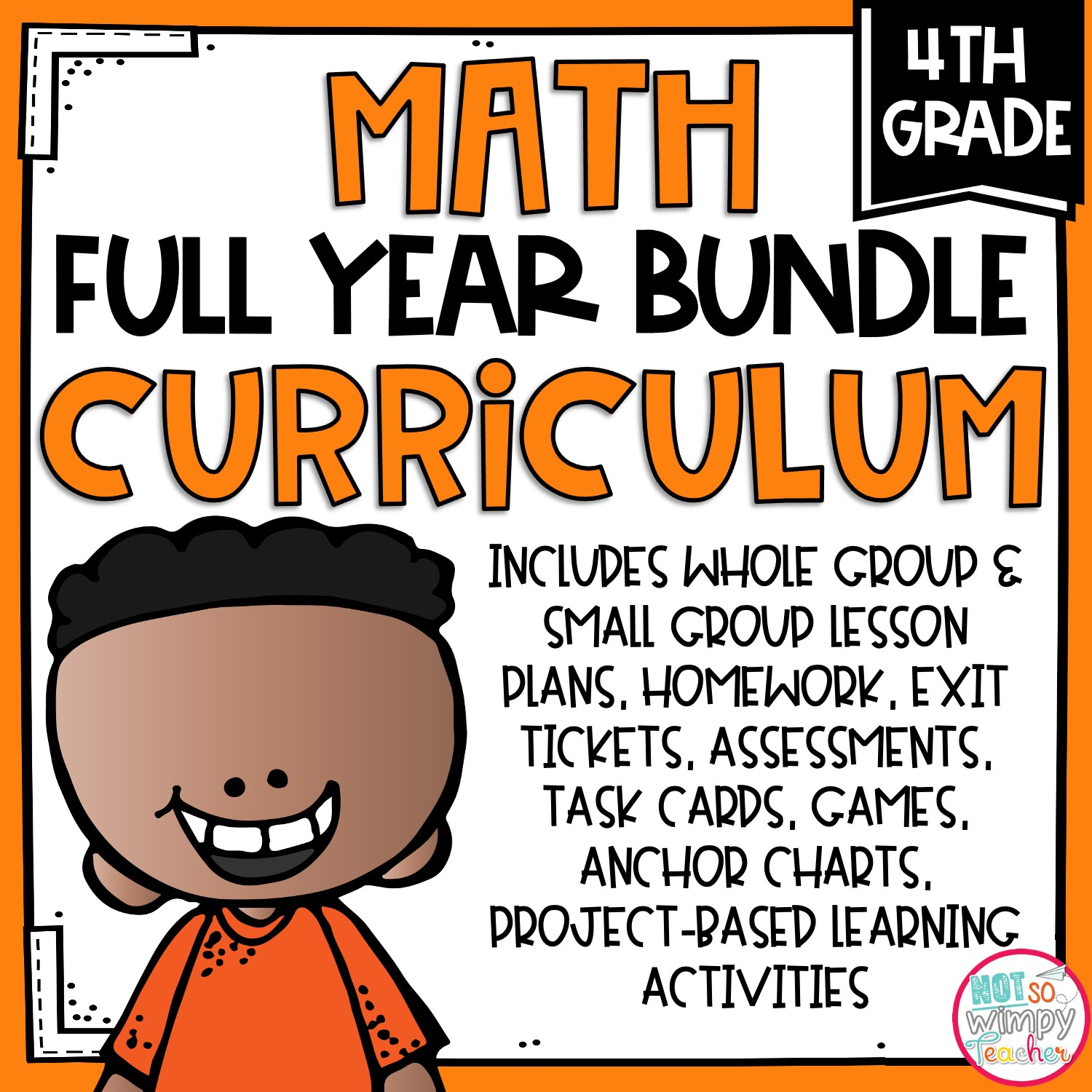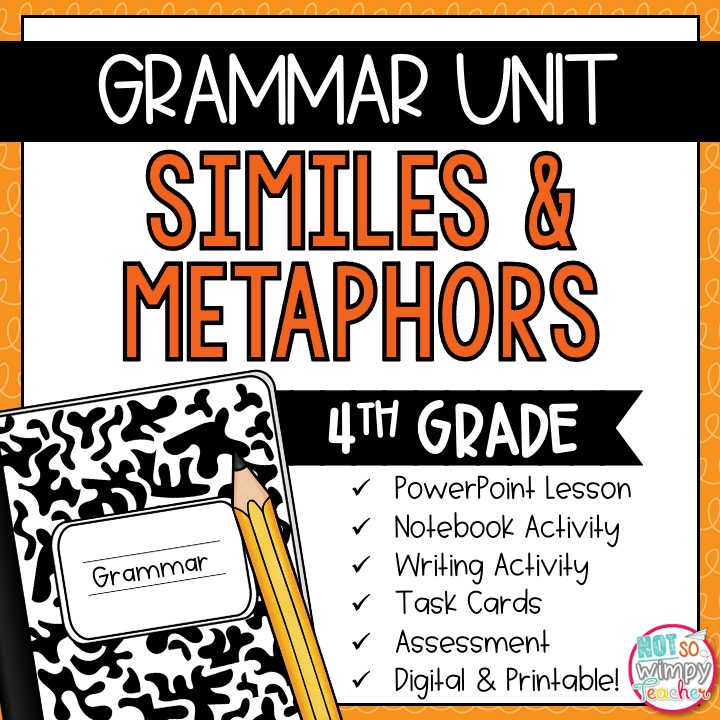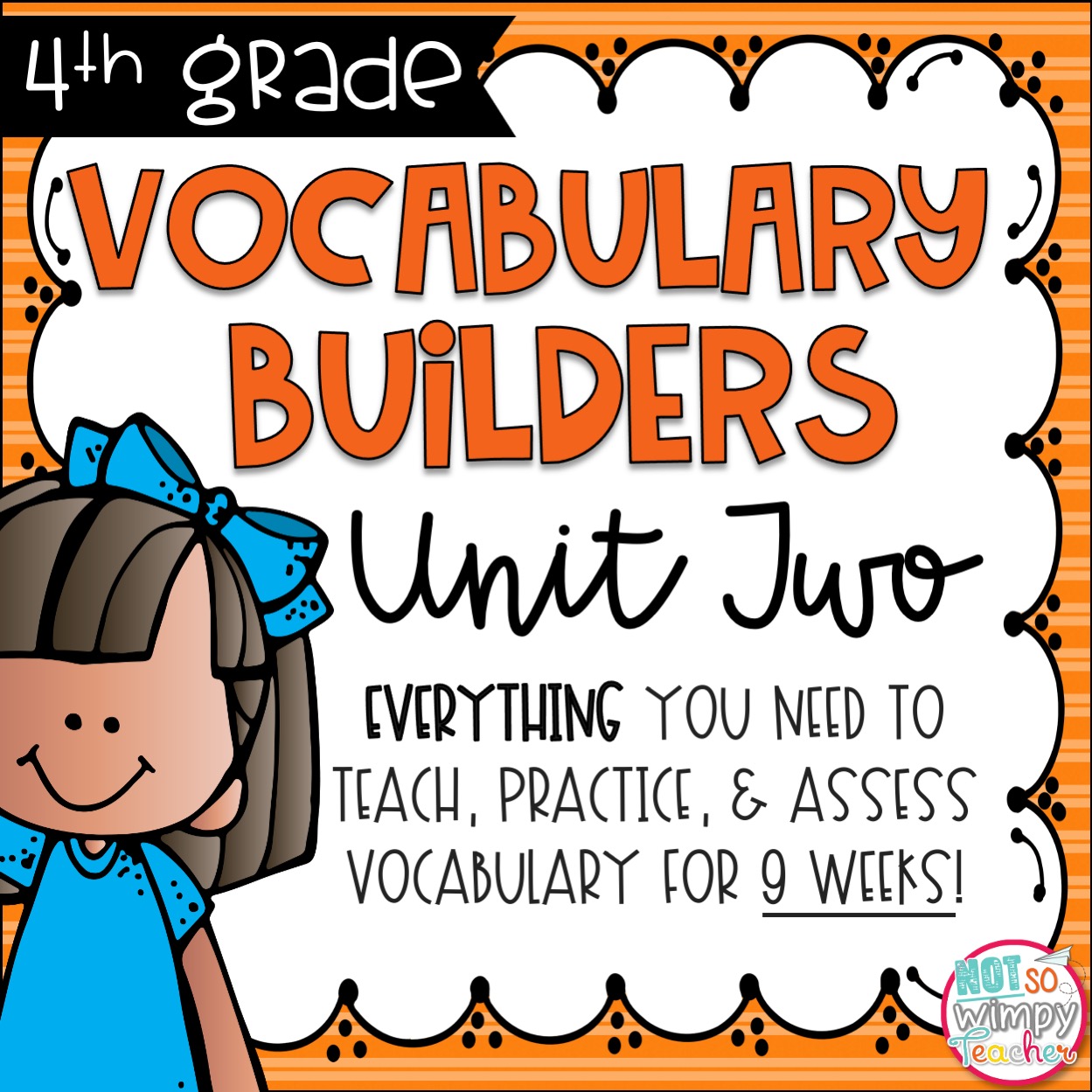This fourth grade bundle has tons of resources to help you teach all of the math standards your students need to learn for the entire year. Our comprehensive Fourth Grade Math Units were designed to be teacher and student-friendly. Think of them like your one-stop shop for math lessons that are fun, engaging, and easy to prep.
Math Curriculum Bundle FOURTH GRADE
Save MORE with Lesson GenieMore about this resource
A better way to teach math. Our full-year fourth grade math curriculum includes 10 standards-based units. Easy to prep and use. Fun, engaging & effective.
Not all math curriculum is awful. Just sum. Ba-da-bum!
But when it is bad, it is very, very bad. And unfortunately, a lot of traditional math curriculum is very, very bad. It’s overly complex, too long, impossible to differentiate, difficult to manage, and, frankly, not much fun. It can be hard to wade through all the extras and find the most valuable parts of the lesson. You don’t have time to read dozens of pages in the teacher manual and there are way too many different pieces to prep. Ugh!
If that sounds like your math curriculum, you’re in luck. Because now you have an alternative that is very, very good. A math curriculum that you and your students will LOVE!
Introducing the Fourth Grade Math Curriculum Bundle! (Cue the confetti!)
This fourth grade bundle has tons of resources to help you teach all of the math standards your students need to learn for the entire year. Our comprehensive Fourth Grade Math Units were designed to be teacher and student-friendly. Think of them like your one-stop shop for math lessons that are fun, engaging, and easy to prep. As an added bonus, this bundle also includes my math fact fluency bundle (a $30 value)!
 There are 10 units in this bundle. And teaching with these units is a breeze. I’ve carefully designed them to follow the same format. You’ll only have to teach the expectations and procedures one time. After that, your students will know exactly what’s coming next in each unit. From mini lessons to centers, small groups to review activities and assessments, they’ll know what to expect. You’ll save so much class time!
There are 10 units in this bundle. And teaching with these units is a breeze. I’ve carefully designed them to follow the same format. You’ll only have to teach the expectations and procedures one time. After that, your students will know exactly what’s coming next in each unit. From mini lessons to centers, small groups to review activities and assessments, they’ll know what to expect. You’ll save so much class time!
The 10 units are organized by topic. Each ready to teach unit comes with everything you need to teach standards-based math skills. The instructional PowerPoint is your complete mini lesson–just project on the board and teach. Daily student activities are effective and engaging–just print and copy for each student. We’ve also included a list of frequently asked questions to address some common concerns and help you troubleshoot.
The At a Glance schedule helps you plan your lessons for the entire unit. Each day includes an instructional PowerPoint and student activity.
This bundle is an amazing value. Priced individually, these units cost $1.38 per day (which in itself is a heck of a deal). But with the bundle, you get all 10 units, a full year of math curriculum, at a significant discount. This low-prep bundle is quite the deal!
Want to see the math curriculum in action? Try a FREE lesson HERE.
What’s Included:
- “At a Glance” calendars show which lesson is being taught each day of the unit.
- Vocabulary cards help deepen student understanding of academic language and models represented by the terms
- A pre-assessment lets you know what prior knowledge your students already have.
- Anchor charts assist visual learners and provide a student reference throughout each unit.
- Daily lesson plans and activities for small group instruction make lesson planning a breeze.
- Suggestions for intervention and enrichment make differentiation easy.
- Graphic organizers for scaffolding students in learning new math concepts.
- Instructional PowerPoints ensure that daily mini lesson are interactive and easy to prepare.
- Each lesson includes student problem sets and homework.
- Exit tickets for each lesson make share time easy and allow for quick formative assessments.
- Helpful tools and resources are included: hundreds charts, skip counting charts, horizontal and vertical number lines, midpoint number lines, and more!
- A math game provides extra practice in a fun and engaging format that students love.
- Level-up activities are included for enrichment
- 5 Project-based learning activities for hands-on, authentic math practice.
- Math Test Prep Escape Room provides a fun and engaging review that will have your students hitting it out of the park on test day.
- Task cards are included for use in centers or as a whole group activity.
- A comprehensive assessment with questions modeled after standardized tests allows students to practice important skills while you assess learning. We’ve also included a scoring rubric which makes it easy to see which skills students still need to master at a glance.
- An FAQs section provides answers to commonly asked questions about the resource and helps you get started right away.
Units Included:
- Addition and Subtraction
- Multiplication & Division
- Area & Perimeter
- Fractions
Unit 2: Place Value, Addition & Subtraction
- Day 1: Number Forms
- Day 2: Digit Values
- Days 3: Comparing Numbers
- Days 4 & 5: Rounding to the Nearest Million
- Days 6-9: Addition with 7 Digits
- Day 10: Review
- Days 11-14: Subtraction with 7 Digits
- Day 15: Estimation
- Day 16: Number Patterns
- Days 17-18: Multi-Step Word Problems
- Day 19: PBL
- Day 20: Assessment
- Days 1-3: Multiplicative Comparisons
- Days 4-5: Multiplying by 10, 100, and 1,000
- Day 6: Multiplying 1- by 2-Digit with Partial Products
- Day 7: Multiplying 1- by 3-Digit with Partial Products
- Day 8: Multiplying 1- by 4-Digit with Partial Products
- Days 9-10: Multiplication with the Standard Algorithm
- Day 11: Review
- Days 12-14: 2-Digit by 2-Digit with Area Model
- Days 15-17: 2-Digit by 2-Digit with Standard Algorithm
- Days 18-19: Factors, Prime, and Composite
- Days 20-21: Factors and Multiples
- Days 22-23: Word Problems
- Day 24: Review
- Day 25: Assessment
- Day 1: Introducing Remainders
- Day 2: Remainders with Equal Groups
- Day 3: Remainders with Arrays
- Day 4: Area Model with No Remainders
- Day 5: Area Model with Remainders
- Day 6: 2-Digit by 1-Digit Division with Partial Quotients
- Day 7: 3-Digit by 1-Digit Division with Partial Quotients
- Day 8: 4-Digit by 1-Digit Division with Partial Quotients
- Days 9-10: Dividing with the Standard Algorithm
- Day 11: Review
- Days 12-13: Divide by 10s, 100s, and 1,000s
- Days 14-15: Estimate Quotients
- Days 16-18: Word Problems
- Day 19: Movie-Themed Multiplication and Division PBL
- Day 20: Assessment
- Day 1: Decomposing Fractions
- Day 2: Equivalent Fractions with Tape Diagrams
- Day 3: Equivalent Fractions with Area Models
- Day 4: Equivalent Fractions with Area Models and Multiplication
- Day 5: Equivalent Fractions with Area Models and Division
- Days 6-7: Using Benchmarks to Compare Fractions
- Day 8: Finding Common Units to Compare Fractions
- Days 9-10: Finding Common Denominators to Compare Fractions
- Days 11-12: Ordering Fractions
- Day 13: Word Problems
- Day 14: Review
- Day 15: Assessment
Unit 6: Operations with Fractions
- Day 1: Decompose Fractions
- Day 2: Adding & Subtracting Parts of a Whole
- Day 3: Adding & Subtracting Fractions Like Denominators
- Days 4-6: Mixed Numbers/Improper Fractions
- Day 7: Adding Fractions: Mixed Numbers
- Day 8: Subtracting Fractions: Mixed Numbers
- Day 9: Adding & Subtracting Mixed Numbers
- Day 10: Adding Fractions: Related Denominators
- Day 11: Subtracting Fractions: Related Denominators
- Day 12: Adding/Subtracting Fractions: Related Denominators
- Day 13: Review
- Day 14: Adding Fractions: Associative Property
- Day 15: Adding Mixed Numbers: Associative Property
- Days 16-18: Multiplying whole Numbers & Fractions
- Days 19-20: Multiplying Whole & Mixed Numbers
- Days 21-23: Word Problems
- Day 24: Review
- Day 25: Assessment
Unit 7: Fractions and Decimals
- Days 1 & 2: Equivalent Fractions with Denominators 10 & 100
- Day 3: What is a Decimal?
- Day 4: Tenths and Decimals Using Models
- Day 5: Tenths and Decimals Using Number Lines
- Day 6: Hundredths and Decimals Using Grids
- Day 7: Hundredths and Decimals Using Number Lines
- Days 8 & 9: Fractions and Decimals
- Day 10: Review
- Days 11 & 12: Comparing Decimals
- Day 13: Word Problems
- Day 14: Party-Planning PBL
- Day 15: Assessment
- Day 1: Classifying Lines
- Day 2: Parallel and Perpendicular Lines
- Day 3: Types of Angles
- Day 4: Right Triangles
- Day 5: Benchmark Angles
- Day 6: Measuring Angles
- Day 7: Measuring and Classifying Angles
- Day 8: Sketching Angles
- Day 9: Angles
- Day 10: Review
- Day 11: Additive Angles
- Day 12: Additive Angles
- Days 13-14: Lines of Symmetry
- Days 15-16: Classifying Shapes
- Day 17: Word Problems
- Day 19: Aquarium-Themed PBL
- Day 20: Assessment
- Day 1: Measurement Systems: inches, feet, yards
- Day 2: Measurement Systems: centimeters, meters, kilometers
- Day 3: Measurement Systems: kilograms and grams
- Day 4: Measurement Systems: pounds and ounces
- Day 5: Measurement Systems: liters and milliliters
- Day 6: Measurement Systems: gallons, pints, quarts, cups
- Day 7: Measurement Systems: money
- Day 8: Measurement Systems: time
- Day 9: Conversion tables and number pairs
- Day 10: Review
- Days 11-12: Line plots
- Days 13-14: Area and perimeter
- Days 15-16: Area and perimeter: rectilinear figures
- Days 17-18: Word problems
- Day 19: PBL
- Day 20: Assessment
- Day 1: Place Value, Addition, and Subtraction
- Day 2: Multiplication 1 by 4
- Day 3: Multiplication 2 by 2
- Day 4: Division
- Day 5: Division with Remainders
- Day 6: Comparing Fractions
- Day 7: Adding and Subtracting Fractions
- Day 8: Adding and Subtracting Mixed Numbers
- Day 9: Fractions and Decimals
- Day 10: Comparing Decimals
- Day 11: Classifying Lines
- Day 12: Angles
- Day 13: Variables
- Day 14: Multistep Word Problems
- Day 15: Escape Room Review
How to Use It in the Classroom:
- You can use the PowerPoint mini lesson for your whole group instruction. Project on the whiteboard and have students participate in the interactive lesson.
- Complete class activities as a whole group, independently, or with partners.
- Introduce the workshop model and meet with small groups of students each day. Don’t worry about these being your regular groups yet. Just get kids used to working independently on the activities while you meet with small groups. As a bonus, you get to see some of your students’ mathematical thinking up close.
- Differentiation is easy with directions for intervention, on-level, and enrichment activities.
- Take a few minutes to share at the end of class. Students will enjoy getting to share what they learned and learning a little bit about their new classmates.
- Each mini lesson will take about 20-30 minutes and you will need an additional 40-60 minutes for small group work and centers.
Why You Will LOVE This Resource:
- The 1-page lesson plan so you don’t have to sift through 6-8 pages
- Done-for-you PowerPoint that you can open and go — letting it guide your whole-group lesson
- Detailed small group lesson plans that include intervention and enrichment suggestions (this is NOT usually in math curricula)
- Pre-assessments and exit tickets to easily monitor student progress
- Hands-on learning activities, including games, task cards, and project-based learning
How to Use Other NSWT Math Resources with the Curriculum:
Math Centers – Use during small group time.
Math Journals – Use as a warm up, wrap-up, or as a center activity.
Additional Resources You Might Like:







